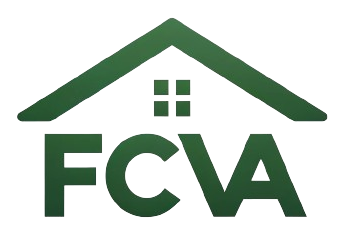How to Sell in Loudoun County When You’re Still Living in the Home
Have you ever wondered how to sell your home while still residing in it? The process can feel daunting, but it is feasible with the right strategies and insights. Selling a home while occupying it presents unique challenges, especially in a dynamic market like Loudoun County. This article will delve into the necessary steps that we, as homeowners, can take to ensure a smooth selling experience without the added stress of relocating before the sale.
Understanding the Market Landscape in Loudoun County
Before we embark on the selling journey, it is crucial to familiarize ourselves with the current real estate landscape in Loudoun County. The market trends, average home prices, and local buyer preferences significantly influence our selling strategy.
Evaluating Current Market Conditions
The first step is to analyze current market conditions. We should look at recent sales data to identify trends. For instance, if the market favors sellers, we may have more room for negotiating our asking price. Conversely, in a buyer’s market, we might need to adjust our expectations.
Local Buyer Preferences
Understanding what local buyers are looking for is equally important. In Loudoun County, buyers often prioritize specific features such as:
- Proximity to schools and amenities
- Outdoor space, particularly yards and decks
- Updated kitchen and bathroom fixtures
Knowing these preferences enables us to highlight the features that potential buyers find appealing in our listings.
Preparing Our Home for Sale
When selling our home while still living in it, preparation is paramount. We must focus on creating an appealing environment that encourages buyers to envision themselves in our space.
Decluttering and Organizing
We can start by decluttering our home. This does not only make our space look larger but also allows potential buyers to visualize their belongings in it. An effective strategy is to designate rooms or areas for storage during showings, allowing us to maintain a lived-in feel while keeping essential items neatly organized.
| Decluttering Strategy | Description |
|---|---|
| Room-by-Room Approach | Tackle one room at a time to avoid feeling overwhelmed. |
| Keep Essentials | Only retain items we use daily to maintain functionality. |
| Storage Solutions | Invest in attractive storage bins or furniture with built-in storage. |
Enhancing Curb Appeal
First impressions matter. Enhancing curb appeal can significantly impact a buyer’s perception of our home. Simple improvements such as landscaping, fresh paint on the front door, and tidy walkways can make a substantial difference.
Marketing Our Home Effectively
With preparation complete, it’s time to focus on marketing our home effectively. This phase is vital to attract prospective buyers and generate interest.
Professional Photography
Investing in professional photography can ensure that our home is presented in the best light online. High-quality images showcasing both the interior and exterior can improve our listing’s attractiveness.
Online Listings and Social Media
Creating online listings on multiple platforms is crucial. We should include comprehensive descriptions, engaging narratives about our home, and captivating visuals. Additionally, leveraging social media can help us reach a broader audience.
| Marketing Channels | Advantages |
|---|---|
| Real Estate Websites | Targeted exposure to interested buyers. |
| Social Media | Broad reach and potential for viral interest. |
| Virtual Tours | Allow buyers to experience our home remotely. |
Navigating Showings and Open Houses
With our home listed, we will undoubtedly face the challenge of accommodating showings and open houses while still living there.
Scheduling Showings
We can set up a showing schedule that aligns with our daily routine. Communicating with our real estate agent about our availability will help streamline this process, ensuring potential buyers can view our home comfortably.
Preparing for Showings
Before each showing, we should make an effort to tidy up and maintain an inviting atmosphere. Simple measures such as ensuring adequate lighting, freshening the air, and decluttering surfaces can significantly impact how buyers perceive our space.
Involving a Real Estate Agent
While we are capable of selling our home independently, enlisting the assistance of a knowledgeable real estate agent can be advantageous, especially when navigating the complexities of selling while living in the home.
The Benefits of a Real Estate Agent
A competent real estate agent will:
- Provide us with a tailored marketing strategy
- Guide us through the negotiation process
- Assist in managing multiple offers effectively
Having someone experienced in our corner can alleviate stress and streamline the selling process.
Understanding the Offers
Once the showings generate interest and offers start rolling in, we must be prepared to assess them objectively.
Evaluating Offers
We should consider several factors when evaluating offers, including:
- The offered price compared to our asking price
- The buyer’s pre-approval for financing
- The proposed timeline for closure
Understanding these elements enables us to choose an offer that aligns with our needs and timelines.
Preparing for Closing
Once we accept an offer, the next steps involve preparing for the closing process.
Necessary Documentation
We must gather all necessary documentation, including:
- Title deed
- Home inspection reports
- Disclosures required by state law
Ensuring these documents are organized will help facilitate a smoother closing process.
Coordinating the Closing Date
We should communicate openly with our buyer regarding the preferred closing timeline. This discussion allows us to prepare adequately for our moving plans while accommodating the buyer’s schedule.
Planning Our Move
As we approach closing day, planning our move becomes crucial. We will need to ensure that we have a strategy in place for packing and relocating.
Moving Timeline
Creating a detailed moving timeline can help us stay organized and within schedule. This timeline should include:
- A packing strategy, prioritizing rooms by significance
- Securing moving services or rental trucks
- Setting a date for utilities transfer
| Moving Checklist | Suggested Dates |
|---|---|
| Start packing non-essentials | 4 weeks before closing |
| Notify utilities and mail services | 2 weeks before closing |
| Confirm moving service | 1 week before closing |
Managing Post-Sale Transition
Once we’ve completed the sale and moved, we still face the transition period. We need to plan how we manage this phase effectively.
Updating Address Information
We must update our address across various platforms, including our bank accounts, subscriptions, and utilities. This process helps mitigate the risk of losing important communications post-move.
Reflecting on the Selling Experience
Finally, we should take time to reflect on our selling journey. Evaluating what worked well and what can be improved for future real estate endeavors will be invaluable.
Conclusion
Selling our home in Loudoun County while living in it can indeed be a manageable experience. Through effective preparation, marketing, and leveraging professional expertise, we can navigate this process smoothly. It is essential to stay organized, maintain open communication with potential buyers and our real estate agent, and ultimately remain flexible throughout the journey.
With the right knowledge and strategies, we can successfully bridge the gap between living in our home and selling it to eager buyers, setting the stage for our next chapter. Transitioning from one home to another need not be overwhelming; instead, it can be a pivotal moment of growth and opportunity.
Ready to sell your house fast in Virginia? FastCashVA makes it simple, fast, and hassle-free.
Get your cash offer now or contact us today to learn how we can help you sell your house as-is for cash!




